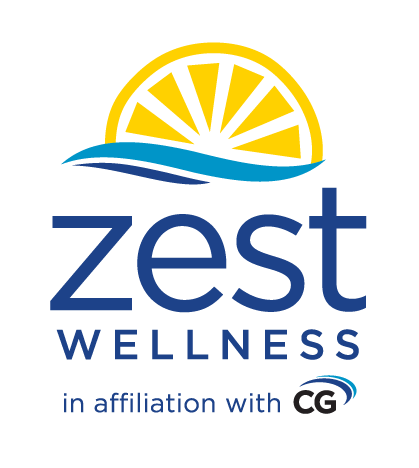Body Composition 101
Historically, Body Mass Index (BMI), which is the ratio of an individual's weight to height, has been used as an indicator of health. However, we know that while an individual's weight may be normal, which initially we would think of as healthy, there could be health risk factors that BMI does not explain.
Therefore, we have turned to Body Composition Analysis to get a more complete picture of individual physical health. Like any health measurement, it is important to be informed about how the data is collected, and what implications it can have on your life.
We’re answering your top questions about Body Composition here:
What is body composition?
Body composition is an especially helpful tool because not all weight is created equal: it helps us look deeper than just the number on a scale. Our weight is a combination of fat mass and fat-free mass. This is why two individuals of the same gender and weight, may have a different physical appearance in terms of their body shape.
Our risk for poor health is affected greatly by body shape, more specifically the distribution of fat mass and fat-free mass. A large distribution of fat mass concentrated near our waist-line, represented as waist circumference, is in itself a predictor of conditions such as heart disease and type 2 diabetes. An individual with a large waist circumference, but for the rest of the body what would appear to be healthy in terms of shape, is very much at risk for poor health. Now we know that the weight on the scale does not tell the whole story, and how important body shape is, we will cover fat mass and fat free mas in detail.
Fat mass is the result of, you guessed it, fat, which up to a certain percentage is required for survival and vital functions, such as regulating body temperature, hormone production, and nutrient absorption. Healthy body fat percentages in females include between 18-28%, and for males includes between 10-20%.
Fat-free mass is a combination of mass including the bones, muscles, organs, and body water. Our focus for fat-free mass is muscle, or skeletal muscle mass. Skeletal muscle mass serves a number of important functions such as movement (including posture and blood flow). It is especially important as someone ages to maintain their skeletal muscle mass, which naturally declines with age and exacerbated by sedentary activity. Healthy skeletal muscle percentages in females include over 30% of total weight, and for males include over 37% of total weight.
All in all, body composition is about looking at what makes up total weight, and the balance between fat mass and fat-free mass. What is sought after is a healthy body fat percentage, and skeletal muscle percentage, which symbolizes being lean.
Where can I have my body composition measured?
There are a number of different techniques used to measure body composition. One technique that may be used is measurement using skinfold callipers. How this method works is a fold of skin is pinched in 4 main areas on one side of the body (biceps, triceps, subscapula i.e. shoulder, and hip), and the sum of the 4 skinfolds at attempt to predict body fat percentage. Keep in mind that this method does not mention, and cannot perform, the measurement of skeletal muscle mass, and therefore does not always produce accurate results regarding what the true measure of body composition is.
InBody machines, used in Zest Wellness Biometric Screenings, are a specialized form of Bioelectrical Impedance Analysis (BIA) with electrodes for both the upper and lower body. BIA works through light electrical currents sent through the body. Through skin contact of electrodes, the electrical current from the BIA is effected by the amount of water in the body, or in the specific part of the body (i.e. left arm). When the current encounters resistance, this symbolizes fat mass, due to the lower water content of fat mass (fat mass contains 10-20% water, fat-free mass contains 70-75% water). Conversely, if the BIA machine sends a current which encounters little resistance, this symbolizes the presence of a higher amount of fat-free mass.
Be careful with some BIA machines that only offer electrodes for the lower body, or half of the body, then use general equations to predict measurements for the full body, as they may not be accurate.
In addition, not all body composition tools provide a measurement for skeletal muscle mass. Lower quality tools will provide a fat-free mass number, also referred to as lean body mass number, but will not measure specifically skeletal muscle mass. Lean body mass is good to be aware of, but it also includes changes in body water – not just muscle itself.
What do the numbers mean?
The numbers mean only as much as what the percentages mean.
Looking at body composition through a relative lens, using percentages, rather than through an absolute lens, using mass/weight, is necessary. This is because body composition is effected upon height and body type (i.e. ectomorph, mesomorph, endomorph – all differentiated by varying degrees of leanness, and bone/joint sizes).
For example, a taller individual requires a higher absolute amount of fat mass, because of their greater area, to maintain a healthy body fat percentage. The single fact that the taller individual as a higher absolute amount of body fat, does not conclude as an unhealthy finding. It is only with using percentages, that classifying someone as healthy or unhealthy in terms of their body composition status can be done.
How can I change my body composition?
Changing body composition is certainly possible, but the solution does not come in a shiny pill. Rather, the solution comes from a balanced lifestyle incorporating exercise and nutrition, but also minimizing distress and maximizing sleep.
In terms of exercise, by incorporate aerobic exercise (i.e. running, cycling) we can burn our excess fat stores, and thus lower our body fat mass, and therefore body fat percentage. By balancing aerobic exercise with anaerobic exercise, or resistance training (i.e. weight lifting), we give ourselves the ability to increase skeletal muscle mass, which is also a method of decreasing excess fat stores.
What may be realized is after an exercise regime of both aerobic and anaerobic activities, overall weight increases. This is okay, and can be considered healthy, because muscle is more dense than fat, so the increase in weight of skeletal muscle mass offsets the decrease in weight of fat mass.
Furthermore, what we do not want to do is go on a caloric restriction diet (i.e. the extreme of starving ourselves) and view food as the enemy. When we unfortunately do this, the caloric restriction lowers our metabolic rate (i.e. our metabolism), which leads us to burn less fat naturally while at rest. Balanced nutrition with minimized processed and sugary foods can help change body composition. Adequate amounts of protein and fiber can help build our muscle mass and help us feel satiated, respectively.
It is crucial to keep in mind the importance of minimizing distress (or negative stress) in our lives, for achieving a healthy body composition. When we are in a state of distress, cortisol is released into our bloodstream, which can lead to an increase in body fat mass.
The fact that distress, and form of mental/emotional health, having an effect on our physical health is profound. Along similar lines, adequate sleep, which provides growth hormone the opportunity to maximize its function in stimulating tissue growth, including muscle growth, is an additional factor for changing and improving body composition.
When you attend a Biometric Screening with Zest Wellness, your data is confidentially stored which will allow you to access measurement history. After your first body composition scan, you will have a starting point, and can begin tracking your progress over time.
Now that you know a bit more about body composition, how it is analyzed, and the lifestyle choices you can make to improve your body composition, we urge you to take advantage of the many tools offered through the Zest Wellness program that will help you on your way.
Existing Zest Wellness members can login here, and if you're ready to sign up, click here!






